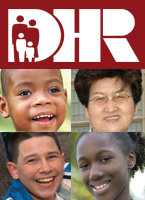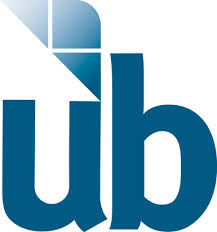Analysis: Federal audit questions state spending on several programs
By Charlie Hayward
For MarylandReporter.com
 An outside audit of how the state of Maryland spent almost $13 billion it got from the U.S. government found significant problems in some of the programs the state runs with federal dollars.
An outside audit of how the state of Maryland spent almost $13 billion it got from the U.S. government found significant problems in some of the programs the state runs with federal dollars.
MarylandReporter.com frequently covers audit results published by the state’s Office of Legislative Audits. OLA’s audit work is similar to internal audits done in the private sector.
A different kind of audit—known as a “Single Audit” and equivalent to an external audit—covers all federal money spent by the state of Maryland. These annual audits are performed by an outside CPA firm hired by the state comptroller. After the comptroller accepts the audit report, it is sent to the federal government.
The latest audit report, performed by SB & Company LLC of Cockeysville, covers $12.8 billion spent by the state during fiscal 2012 that originated from federal coffers. Audit results are used by federal agencies to monitor the state’s compliance and spending. By law, the federal government can respond to audit exceptions by requiring the state to return misspent money or money the auditors cannot find due to bad records.
Serious deficiencies in fiscal 2012 findings
The 2012 single audit found several significant deficiencies, defined by the federal government as “important enough to merit attention by those charged with governance.” The most serious deficiencies included:
1. Beneficiaries of Medicaid and the Children’s Health Insurance Program (CHIP) could not be verified to be eligible for assistance under the prevailing regulations. The auditor sampled 60 participant files and four files either couldn’t be located or the eligibility determinations were otherwise deficient (7% deficiency rate.)  Medicaid and CHIP are administered by Maryland’s Department of Health and Mental Hygiene (DHMH), which is required to keep a file for each beneficiary that objectively demonstrates eligibility determinations and supervisory approvals.
Medicaid and CHIP are administered by Maryland’s Department of Health and Mental Hygiene (DHMH), which is required to keep a file for each beneficiary that objectively demonstrates eligibility determinations and supervisory approvals.
2. Beneficiaries of the Temporary Assistance for Needy Families (TANF — what used to be called “welfare”) could not be verified to be eligible for assistance under the prevailing regulations. The auditor sampled 60 participant files — 10 files couldn’t be located; and 50 files evidenced deficiencies with participant income verifications (100% deficiency rate.)  This program is administered by Department of Human Resources (DHR).
This program is administered by Department of Human Resources (DHR).
The auditor found that the high number of missing files “prevented the audit of the requirement.” In other words, the audit firm could not do the work it was contracted to perform because of the department’s poor recordkeeping.
3. Beneficiaries of Adoption Assistance could not be verified to be eligible for assistance under the prevailing regulations. The auditor sampled 60 participant files and four files evidenced deficiencies regarding participants’ eligibility (7% deficiency rate.) This program is administered by the Department of Human Resources.
Problems at University of Baltimore and Coppin State
4. At the University of Baltimore, 23 out of 40 students sampled were incorrectly classified as enrolled part-time or full-time when in fact they had withdrawn from school (58% deficiency rate.)  This inaccurate reporting went into a database used by the U.S. Department of Education for managing student loan repayment dates, grace periods, and deferments.
This inaccurate reporting went into a database used by the U.S. Department of Education for managing student loan repayment dates, grace periods, and deferments.
5. At Coppin State University, 40 out of 40 sampled students withdrew from classes and thus took zero credits, but 15 were incorrectly reported as attending half-time, 23 were incorrectly reported as attending full-time, and two were incorrectly reported as less than half-time (100% deficiency rate.) This inaccurate reporting was entered into the same federal database for loan administration described above. (The university system has appointed an interim president to revamp the administrative structure at Coppin after a task force found massive problems there.)
6. At Coppin State, 14 of 40 students received student loans or grants, but the university was unaware those students dropped or withdrew from class, causing the university to keep rather than return $20,000 to the U.S. Department of Education.
Unresolved findings from prior years
The state has longstanding difficulties with satisfying the auditor that program beneficiaries are in fact eligible for assistance. Shortcomings over the years cross multiple federal programs administered by several state agencies. This year’s single audit report describes a variety of unresolved findings, many repeated over several years and one of which dates back to fiscal 2004.
The findings correspond with questionable eligibility of beneficiaries for Medicaid, CHIP, TANF, Foster Care, Adoption Assistance, Low-Income Home Energy Assistance Program, and student aid. These programs are administered by the departments of Health and Mental Hygiene and Human Resources and by state universities. The auditors reported several types of problems: Files were lost or incomplete; files contained inaccurate information leading to improper assistance; and secondary approvals of initial eligibility determinations were absent.
Another longstanding problem area involves inadequate inventory control over food stocks provided by U.S. Department of Agriculture. This weakness has existed since at least 2010 without being resolved. USDA delivers surplus food commodities to the control of DHR, which in turn offers foodstuffs through 22 organizations throughout the state. The auditor describes a concern for “abuse, including fraud” that can’t be detected due to lack of inventory control. The auditor seems to be worried about the possibility for theft by those who have physical custody of the food rather than beneficiaries. During fiscal 2012, this program involved $4.2 million of food distributions by DHR.
Another finding involves state scholarships under the TANF program that the state awarded under the rationale that “post-secondary educational attainment by State residents decreases the incidence of out-of-wedlock births by raising the ‘opportunity cost’ of having children outside of marriage. Studies also show that professional careers (often the product of higher education) delay fertility.” The auditor questioned this spending ($43 million) in its 2010 audit, and the finding is unresolved.
Federal aid to Maryland growing fast
Maryland’s recent budgets show a historical trajectory upwards. From 2007 to 2014, overall costs of operating Maryland government have increased 30% (or 3.5% compounded annually.) Revenues to pay for government come from many sources; primarily income taxes, sales taxes, lottery, borrowing, and the federal government. Taxpayers may be surprised to know the federal government is the state’s largest source of revenue—paying for almost 30% of the cost of Maryland’s operations.
It also may surprise some that state revenues from the federal government are rising at a much faster rate than any other revenue source. Federal aid to the state will rise from $6.5 billion to $9.8 billion in the eight years ended June 2014—increasing almost 51% (approximately 6.1% compounded annually.)
Some programs are clean, but some of the largest have longstanding problems
The audit did not detect any deficiencies in many large federal assistance programs being managed by the state, including programs relating to infrastructure and research & development. However, the programs where the state has had longstanding difficulties include some of the largest and most costly social programs in the state. Medicaid and TANF, for instance, were $4.1 billion and $222 million, respectively, in FY 2012. It’s also important to note that the audit was not designed to determine the total dollars that were unsupported or misspent, and the state has no way to quantify this.
Longstanding problems in programs where the state must document participant eligibility determinations are not unique to Maryland. The more people who become eligible for assistance and the larger the programs get, the more cumbersome the programs are to administer and audit. And so a certain level of payment errors can be expected, in Maryland and across the country.
Charlie Hayward recently retired after 30 years’ experience with performance, IT, and financial auditing of a wide variety of government programs and activities. He can be reached at hungrypirana@verizon.net.

MarylandReporter.com is a daily news website produced by journalists committed to making state government as open, transparent, accountable and responsive as possible – in deed, not just in promise. We believe the people who pay for this government are entitled to have their money spent in an efficient and effective way, and that they are entitled to keep as much of their hard-earned dollars as they possibly can.
